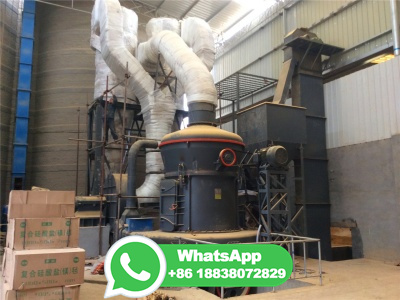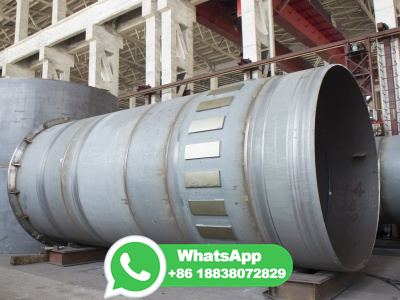
The steel industry represents about 7% of the world's anthropogenic CO 2 emissions due to the high use of fossil fuels. The CO 2lean direct reduction of iron ore with hydrogen is considered to offer a high potential to reduce CO 2 emissions, and this direct reduction of Fe 2 O 3 powder is investigated in this research. The H 2 reduction reaction kinetics and fluidization characteristics of ...
WhatsApp: +86 18203695377
Since iron and steelmaking processes are based on the reduction of iron ore, which is a process not directly electrifiable at large scale yet, ... The conclusions of the study recommended (i) steel producers to invest into direct electrolysis of iron ore to reach industrial maturity by and (ii) policy makers to provide a consistent ...
WhatsApp: +86 18203695377
The iron used in the steelmaking process is currently chemically reduced from iron ore through the use of fossil resources natural gas or coal. This process is known as Direct Reduced Ironmaking (DRI).
WhatsApp: +86 18203695377
Direct reduction (DR) This is any process in which iron is extracted from ore at a temperature below the melting points of the materials involved. Gangue remains in the spongelike product, known as directreduced iron, or DRI, and must be removed in a subsequent steelmaking process. Only highgrade ores and pellets made from superconcentrates ...
WhatsApp: +86 18203695377
Approximately 90% of the steel industry's CO 2 emissions occur during pyrochemical reduction of iron oxide (ore) into iron metal in blast furnaces and direct reduction furnaces. However, decarbonizing iron and steel production is more complicated than removing coal and other fossil fuels from the production process.
WhatsApp: +86 18203695377
Figure 3 shows a comparison of the IEA and WSD views and the related iron ore demand of between 400 and 600 mt by 2050, compared to about 160 mt in 2019. From the quantitative perspective, iron ore supply should not be an issue, with BF iron production falling from just under billion tonnes in 2019 to 665 mt by 2050 per IEA's SDS (see Figure 1).
WhatsApp: +86 18203695377
This mathematical evaluation focuses on iron ore ultrafines for their use in a novel hydrogenbased fluidized bed direct reduction process. The benefits of such a process include reduced CO 2 emissions and energy consumption per ton of product, lower operational and capital expenditure, and a higher oxide yield. Typical samples of iron ore ultrafines, such as pellet feed, are given and ...
WhatsApp: +86 18203695377
Direct employment in steel manufacturing has declined by 49%, from 257,200 workers in 1990 to 131,400 workers in 2021. Steel is a major component in many consumer and industrial products, ... manufacturing process, such as iron ore, limestone, and scrap may be imported, the steel must be 3 Geological Survey ...
WhatsApp: +86 18203695377
The direct reduction plant will come in a modular design, allowing for a tailormade scaling for customers for all sizes of steel plants. The first tests were successfully executed in April and May of 2021. The scale of one test run is in the range of processing of 800 kilograms of iron ore. The HYFOR pilot plant shall be operated for at least ...
WhatsApp: +86 18203695377
To avoid locking in further coalbased steelmaking capacity for decades, some technology switching to DRIelectric arc furnace (EAF) processes will be required before then. Potential new DRgrade iron ore capacity by 2030 ranges from 40 million tonnes per annum (Mtpa) to an optimistic high of 100Mtpa. Unless technology innovations allow use of ...
WhatsApp: +86 18203695377
In the directreduced iron (DRI) process, the iron ores are reduced directly to sponge iron by gaseous reducing agents! Electrosteel process In the electric steel process, the sponge iron obtained from the direct reduced iron process is used for crude steel making.
WhatsApp: +86 18203695377
Electrical powerbased iron reduction technologies use electricity to produce steel by means of iron ore electrolysis at different temperature levels (lowtemperature iron electrowinning, hightemperature pyroelectrolysis). ... To get a complete overview of the carbon footprint of the DR process, not only the direct emissions of the process ...
WhatsApp: +86 18203695377
An additional challenge steel producers face, is the reduced quality of iron ore, resulting in the need to beneficiate the iron ores. In order to progress to a CO2free steel production, a process using mainly H2 is most desirable. The new HYFOR process developed by Primetals Technologies takes care of all the above considerations.
WhatsApp: +86 18203695377
iron processing, use of a smelting process to turn the ore into a form from which products can be fashioned. Included in this article also is a discussion of the mining of iron and of its preparation for smelting. Iron (Fe) is a relatively dense metal with a silvery white appearance and distinctive magnetic properties.
WhatsApp: +86 18203695377
Turning low grade iron ore into the most used metal in the world is no easy task. Learn how this hot process works on Discovery Channel's "HowStuffWorks" sho...
WhatsApp: +86 18203695377
Steel Smelting, Alloying, Refining: In principle, steelmaking is a melting, purifying, and alloying process carried out at approximately 1,600° C (2,900° F) in molten conditions. Various chemical reactions are initiated, either in sequence or simultaneously, in order to arrive at specified chemical compositions and temperatures. Indeed, many of the reactions interfere with one another ...
WhatsApp: +86 18203695377
The main area of use for our green hydrogen will be to reduce iron ore to directreducediron, DRI (also referred to as iron sponge). By using green hydrogen instead of coal, we can reduce CO2 emissions from the reduction process with around 95 percent.
WhatsApp: +86 18203695377
Direct reduction does not mean a onestep steel production process from iron ore but iron oxide reduction without reaching the melting point of any materials involved. The reduction takes place at temperatures between 750 and 1100°C. In a DR process iron ores/iron oxides are reduced using solid or gaseous reductants to a solid metalized ...
WhatsApp: +86 18203695377
Due to its high implementation rate, representing about 65% of the total worldwide produced direct reduced iron (DRI), the MIDREX process was selected as basis for the following considerations (see Figure 1). The key component of the DR process is a shaft furnace, where the reduction of iron ore to sponge iron by using NG or other gaseous ...
WhatsApp: +86 18203695377
Steel production causes significant emissions of carbon dioxide. To decarbonize steel production and its high carbon dioxide emissions, Fraunhofer researchers, TS ELINO and Salzgitter AG are working on converting an existing steel mill to climateneutral production methods. The aim is to produce steel by the direct reduction of iron ore with hydrogen, which would completely replace ...
WhatsApp: +86 18203695377
Steel making, Direct Iron Ore Smelting (DIOS), etc. Notable for . these methods is the COREX process, ... performance of the reductionsmelting process of iron ore as a .
WhatsApp: +86 18203695377
Background of Iron and Steel Industry 1 Overview of Iron and Steel Industry 2 Details of Direct Reduction of Iron Plants 2 Mapping of Direct Reduction of Iron Units 4 Production Process 5 Key Performance Indicators of Direct Reduction of Iron Process 9 Capacity Utilization 10 Yield 10
WhatsApp: +86 18203695377
In that work, we chose a relative low temperature compared with those used in industrial shaft furnaces (viz. °C) to monitor the intermediate microstructural changes prior to complete reduction and associate them with the ratelimiting steps of this process. Solidstate direct reduction of iron ore pellets using molecular hydrogen ...
WhatsApp: +86 18203695377
Benefits. The Circored™ process is a hydrogenbased process for direct reduction of iron ore fines. The flexible process, which produces highly metalized direct reduced iron (DRI) or hot briquetted iron (HBI) that can be fed directly to an electric arc furnace, has proven its functionality and performance in an industrialscale ...
WhatsApp: +86 18203695377
drex DRI Te chnologies for the Iron and Steelking Industry Pa ge | 7 Steel Making Process and CO 2222 EmissionsEmissionsEmissions Steel is primarily made by one of two processes: the blast basic oxygen furnace (BFBOF), and the electric arc furnace (EAF). The BFBOF is a twostep process. First, in the blast furnace, mined iron ore is combined
WhatsApp: +86 18203695377
Similarly, the iron ore may have embedded emissions unless it is extracted and processed in an emissionsfree manner. Furthermore, small amounts of carbon must be added to the EAF in the HDR process to make steel from iron. In commercial direct reduction, carbon is added through the natural gas stream.
WhatsApp: +86 18203695377
Iron ore reduction is an important process in the iron/steelmaking industry, where iron ore is reduced to metallic iron, usually with coal, coke, natural gas, CO, or hydrogen as the reducing agents. Fig. 1. Scheme of the CBGIOR process ( Wei et al., 2017a,b ).
WhatsApp: +86 18203695377